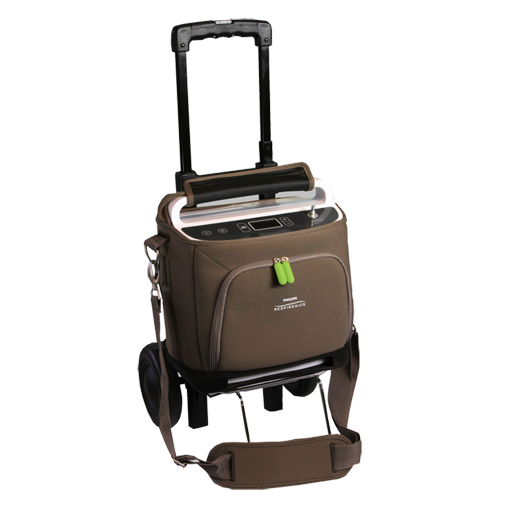Portable Oxygen Concentrators Fundamentals Explained
Wiki Article
The Basic Principles Of Portable Oxygen Concentrators
Table of ContentsExcitement About Portable Oxygen ConcentratorsPortable Oxygen Concentrators - Truths10 Easy Facts About Portable Oxygen Concentrators ShownPortable Oxygen Concentrators Things To Know Before You Get This
Stationary oxygen concentrators were once the requirement, yet these tanks can consider 50 extra pounds and were really cumbersome (Portable Oxygen Concentrators). Currently, mobile oxygen concentrators obtain the task done, and they can match a bag or purse! The only point you ought to remember is that mobile concentrators have much more minimal oxygen distribution abilitiesThere are 2 main kinds of mobile oxygen concentrators: pulse dose and continual flow. As the name suggests, pulse dose concentrators provide oxygen intermittently, only activating when you breathe in. This kind of gadget is normally suggested for COPD clients with limited oxygen demands, as the amount of O2 that a pulse dosage concentrator can provide is reasonably low.
This gadget can supply up to 3,000 m, L of oxygen every minute, while pulse dosage devices have a tendency to cover out at 1250 m, L. Constant circulation devices are the go-to for many COPD clients, as they're perfect for people who need 2 to five litres of oxygen a min.
Now that you have this guide to the different types of mobile oxygen devices, select the ideal gadget with the assistance of your physician.
Some Known Incorrect Statements About Portable Oxygen Concentrators
We realize Americans make use of residential versions in home care circumstances. We questioned exactly how well these mobile oxygen concentrators would function in hospitals. POC concentrators raise the proportion of oxygen in ambient air individuals take a breath in, whenever they require a boost. Private-use ones are little sufficient to carry around, and may aid avoid the demand to go to congested facilities and health centers.When it concerns portable oxygen therapy, there are two primary choices for delivery. These are portable oxygen cylinders which consist of pressed oxygen gas, or oxygen concentrators, which make use of a battery powered system to compress and filter air, in order to create a constant supply of focused oxygen. In this post, AMS Compound Cylinders Technical Director, Tony Morrin, compares the two, considering the benefits and drawbacks of each oxygen shipment system for NHS medical oxygen customers in terms of individual autonomy.

Mobile Oxygen Concentrator Oxygen purity is regularly higher when provided from cyndrical tubes it never ever drops below 99. 6%, no matter the circulation rate called for. In battery-powered concentrators, pureness is impacted by flow rate, and may be 90% or much less, depending upon the tools. Whilst oxygen concentrators can be valuable for individuals that need a reduced circulation of oxygen, cylinders provide higher focus that can be preferable for patients with high flow needs.
The 6-Second Trick For Portable Oxygen Concentrators
Both systems require the person to bring around devices. For cyndrical tubes, this will consist of carrying a bag (and sometimes a cart) and for portable oxygen concentrators this will include the bag, cart and power battery charger. his explanation Weight smart, mobile oxygen concentrators can be equivalent in weight, or occasionally, lighter than typical aluminium cylinder systems.
They will have to enhance significantly if they are to offer the very same degree of performance as equivalent composite cylinders. Oxygen always brings a safety and security risk. On one hand, ought to cyndrical tubes spring a leakage, they can create an oxygen rich atmosphere that could result in a rise in fire danger.

The distinction is that there are substantial upfront costs to acquiring a portable oxygen concentrator, yet lower running expenses making use of cylinders allows the buyer to spread the price over a prolonged time period. One small drawback of a portable oxygen concentrator is the sound portable systems make a significant quantity of noise throughout procedure, which many people find disruptive.
The 4-Minute Rule for Portable Oxygen Concentrators

Our high-quality carbon composite cyndrical tubes use high pressure (300 Bar), low weight, and NLL (Non-Limited Life) efficiency, and are certified for usage worldwide. Additional information concerning AMS Compound Cylinders Ltd can be located at .
Oxygen concentrators are made with customer wheelchair in mind. Whether it's a desktop variation for home usage or a smaller, lightweight model for on-the-go, these tools enable patients to relocate freely without being connected to a stationary unit. Specifically for the ones specifically made for mobility, clients can carry them about, helping with traveling and everyday tasks easily.
Among the significant eases of utilizing an oxygen concentrator is the removal of the constant requirement to fill up oxygen storage tanks. This not only minimizes the logistical challenges and reoccurring prices connected with refills yet also makes certain that the user has a much more predictable and constant source of oxygen. Oxygen concentrators are designed to fit seamlessly into the home environment.
Report this wiki page